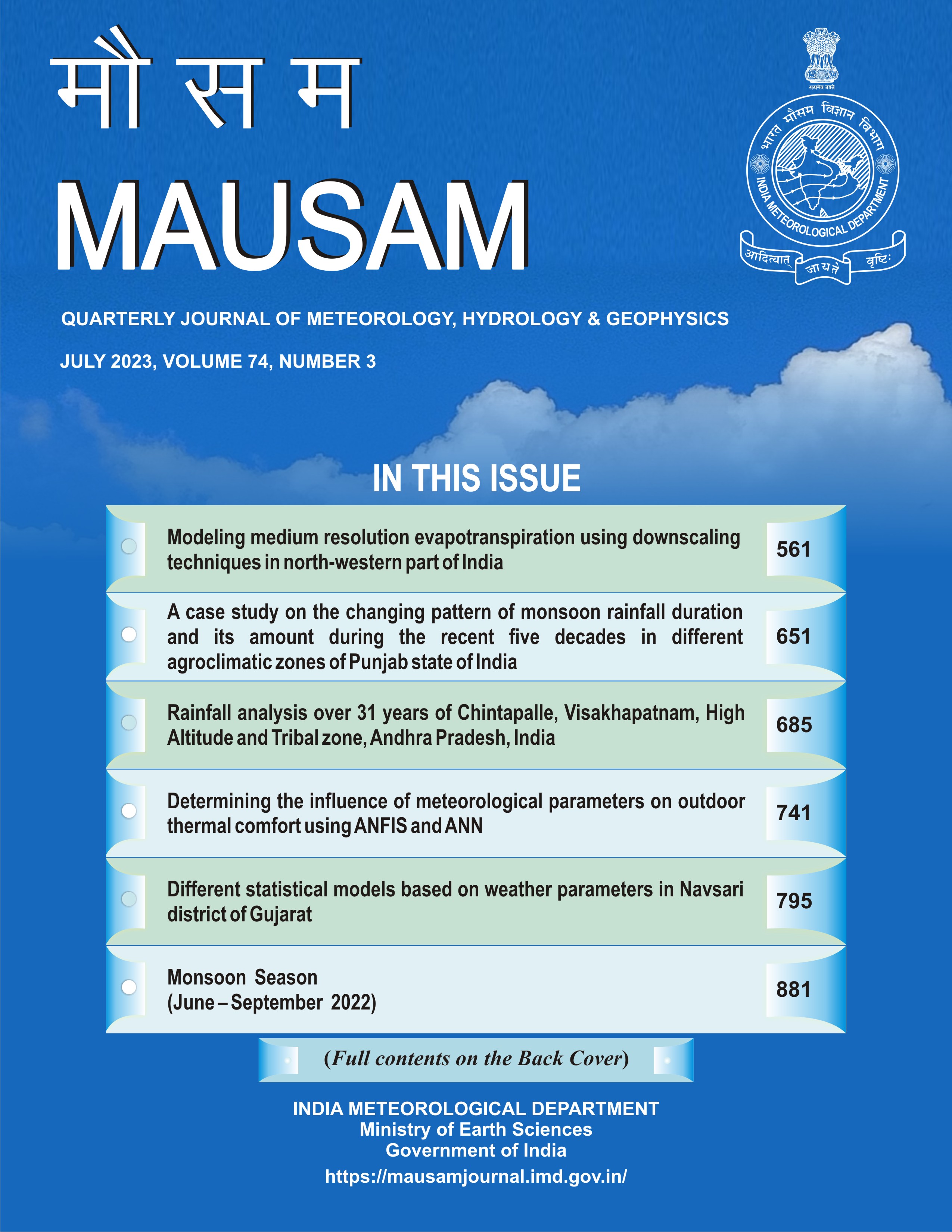Modeling medium resolution evapotranspiration using downscaling techniques in north-western part of India
DOI:
https://doi.org/10.54302/mausam.v74i3.5112Abstract
The present investigation provides a modeling solution to downscale MODIS-based evapotranspiration (ET) at a 30 m spatial resolution from its original 500 m spatial resolution using meteorological and Landsat 8 (Operational Land Imager, OLI) data by employing downscaling models. The nine indices namely Surface Albedo, Land Surface Temperature (LST), Normalized Difference Vegetation Index (NDVI), Soil-Adjusted Vegetation Index (SAVI), Modified Soil-Adjusted Vegetation Index (MSAVI), Normalized Difference Built-up Index (NDBI), Normalized Difference Water Index (NDWI), Normalized Difference Moisture Index (NDMI), and Normalized Difference Infrared Index for Band 7 (NDIIB7) were calculated from Lansat 8 data at 30 m spatial resolution. The multiple linear regression (MLR) and Least Square Support Vector Machine (LS-SVM) models were developed to generate the relationship between MODIS 500 m ET and Landsat indices at 500 m scale. Further, these develop models were used to estimate 30 m ET based on 30 m Landsat 8 indices. The performance of developed models (MLR and LS-SVM) was carried out using correlation coefficient (CC), Nash-Sutcliffe coefficient (NASH) efficiency, Root Mean Square Error (RMSE) and Normalised Mean Square Error (NMSE). Penman–Monteith (PM) method was used to estimate the ET using observed station data. The results show that lowest ETO was observed in the month of December while it was maximum in the month of May. Using the performances indices, it was found that LS-SVM model slightly outperformed than MLR model. However, the downscaled model overestimates ET in comparison to the Penman-Monteith method. Further, the significant correlation was found between MODIS ET and LS-SVM ET at all the stations.
Downloads
Published
How to Cite
Issue
Section
License
Copyright (c) 2023 MAUSAM

This work is licensed under a Creative Commons Attribution-NonCommercial 4.0 International License.
All articles published by MAUSAM are licensed under the Creative Commons Attribution 4.0 International License. This permits anyone.
Anyone is free:
- To Share - to copy, distribute and transmit the work
- To Remix - to adapt the work.
Under the following conditions:
- Share - copy and redistribute the material in any medium or format
- Adapt - remix, transform, and build upon the material for any purpose, even
commercially.



